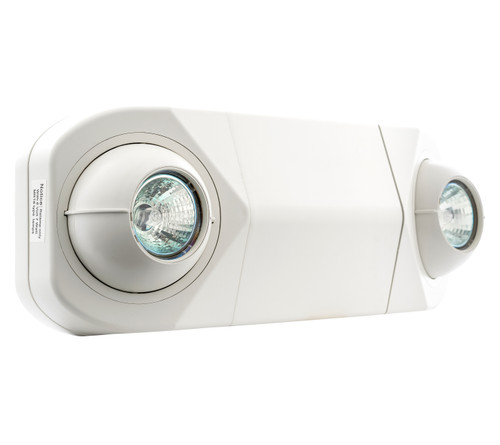Introduction to Emergency Lighting
The Regulatory Reform (Fire Safety) Order (RRFSO) 2005, which came into force in October 2006, charges the responsible person in control of non-domestic premises and the common areas of a House in Multiple Occupancy (HMO) with the safety of everyone in the building, whether working, visiting or living there. This duty of care includes the provision of emergency lighting. Article 14 (2) (h) of the RRFSO states:
"Emergency routes and exits requiring illumination must be provided with emergency lighting of adequate intensity in the case of failure of their normal lighting".
Emergency lighting is part of the fire safety provision of a building and cannot be ignored: as noted by the Industry Committee for Emergency Lighting (ICEL), which is the foremost UK authority on emergency lighting and provides third party accreditation for components and products for emergency light fittings under the auspices of the Lighting Industry Association (LIA):
"The legal requirement is that non-domestic buildings must be safe at all times, even if mains power failure occurs. Therefore, nearly all such buildings must have emergency lighting fitted".
Emergency lighting systems: what is involved?
Following the fire risk assessment (FRA), which will surface the various issues that have to be addressed, the procedure in respect of emergency lighting will be:
- Planning and design of the system
- Positioning of emergency lighting luminaires (wall / ceiling mounted lights and signs)
- Permanent installation of all fittings
- Periodic testing / maintenance of the system
Every building will have its own specific requirements in respect of emergency escape illumination, the role of which, as noted above, is to take over from the normal lighting provision in the event of a power or circuit failure. Of course, these levels of 'normal' lighting will vary, even within an individual building. Different areas inside will have different levels of natural illumination: for example, rooms with external windows have the benefit of daylight, while unglazed, internal areas such as corridors and stairwells must always have lighting provided.
If a building is occupied at night, there must usually be provision for emergency lighting in all areas, including those that are naturally lit during the day. One exception may be in the case of 'borrowed' light from external street lamps (switched on during the hours of occupancy of the premises): if this is a reliable source of lighting and reaches sufficiently inside the building to illuminate the escape routes, it can sometimes be considered sufficient, depending on who will be using them. As noted by the HM Government Fire safety risk assessment: large places of assembly (May 2006, p 28): "Exceptionally, in the parts of the premises used by staff and where the escape routes are simple and straightforward, borrowed lighting, e.g. from street lamps where they illuminate escape routes, may be acceptable". In other words, people who are familiar with the building may be able to evacuate safely in the hours of darkness by borrowed light; it is never acceptable practice, however, for members of the public to use escape routes that are only illuminated by such means. Emergency lighting must always be provided in this case.
What is emergency lighting?
Emergency escape lighting is defined as "that part of emergency lighting that is provided to enable safe exit in the event of failure of the normal supply".
Standby lighting is defined as "that part of the emergency lighting provided to enable normal activities to continue in the event of failure of the normal mains supply".
The guide further offers this important distinction between emergency escape lighting and standby lighting: while the former constitutes part of the fire protection of a building, the latter does not (unless it meets the same equipment design and installation requirements as emergency escape lighting systems). As such, from the point of view of fire safety provision, emergency escape lighting is the significant type of emergency lighting, and will be the focus of the remainder of this article.
Emergency escape lighting
There are three main aspects of emergency escape lighting: 1) escape route lighting; 2) open area / anti-panic area lighting; 3) high risk task area lighting.
- Escape route lighting is the part of an emergency lighting system provided to enable the swift and safe evacuation of a building by illuminating its escape routes, such as corridors and stairways, and also the location of fire-fighting equipment, e.g. fire extinguishers and safety / security equipment such as keyboxes holding emergency keys to exit doors. As such, escape route lighting can be seen to be a fundamental requirement of fire safety provision in all non-domestic premises and public areas of HMOs, whatever their use or occupancy levels.
- Large public buildings such as shopping malls, museums and exhibition halls, etc., attract significant numbers of visitors who will not be familiar with the layout of the premises. Panic may therefore ensue should emergency evacuation be triggered by the sounding of the fire alarm. Open area / anti-panic lighting is relevant in such situations to aid in the identification of escape routes and exits and the guidance of people towards them.
- High risk task lighting is a specific type of emergency lighting provided to ensure the safety of people involved in a potentially dangerous process or situation. It must be sufficient to enable the requisite shut-down procedures to be implemented. This type of lighting will only apply across a limited range of scenarios.
The above distinctions serve to emphasize the role of emergency escape lighting in fire safety and how it is adapted and applied, on a case by case basis, according to the specific use and occupancy levels of a particular building and / or areas within it.












